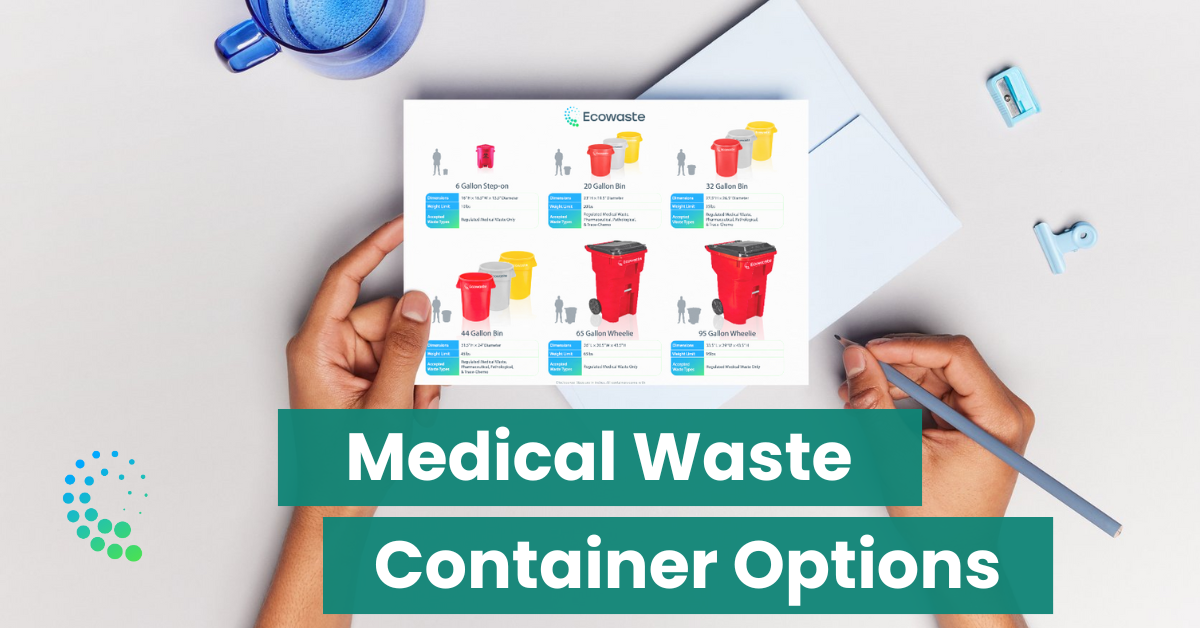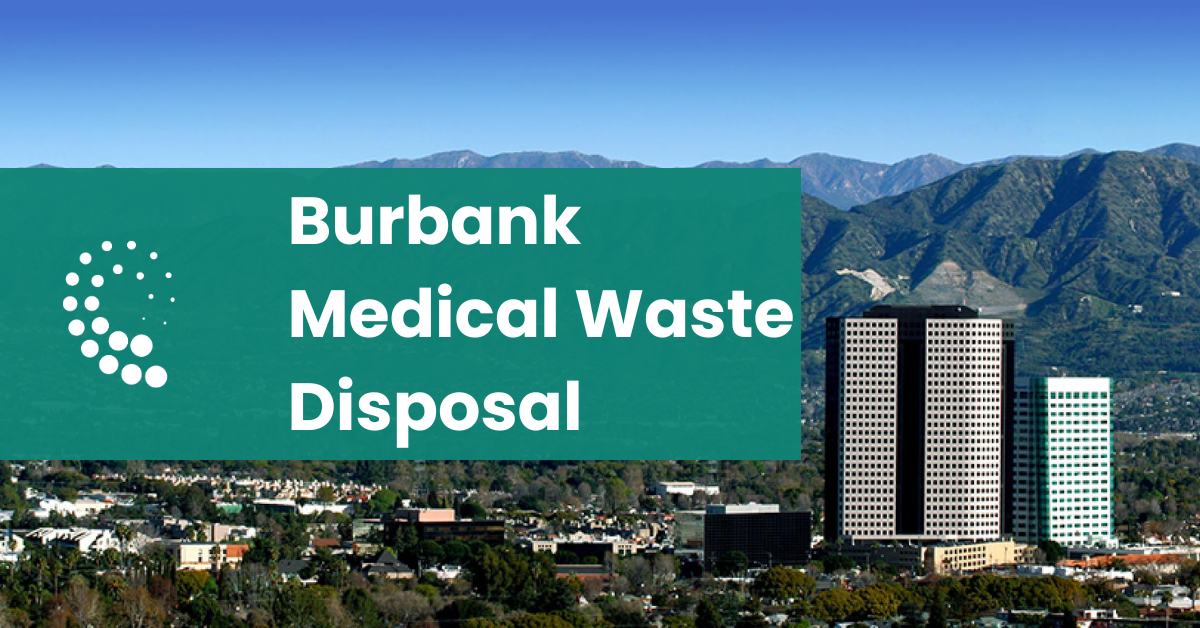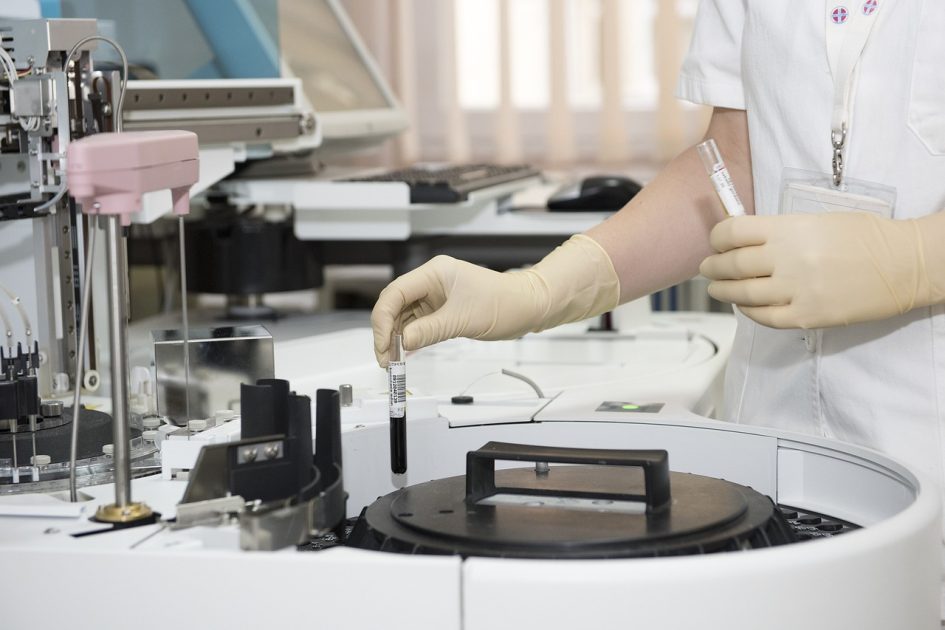
Medical Waste Container Size and Options
April 28, 2024
Best Practices for Burbank Medical Waste Disposal
June 6, 2024The importance of proper medical laboratory waste disposal
Medical laboratories generate a significant amount of waste, including biohazardous materials that pose a risk to human health and the environment. Proper disposal of this waste is crucial to prevent the spread of infectious diseases, minimize environmental pollution, and ensure compliance with relevant regulations.
Effective medical laboratory waste disposal not only protects the community but also safeguards laboratory personnel and patients.
Understanding the different types of medical waste in a laboratory
There are many different types of medical waste. Medical laboratories come across a wide variety of medical waste categorized into several types, each requiring specific handling and disposal methods. These include:
- Infectious waste: This category encompasses waste contaminated with blood, body fluids, or other potentially infectious materials, such as used needles, syringes, and culture dishes.
- Pathological waste: This includes human tissues, organs, and body parts removed during medical procedures or autopsies.
- Chemical waste: This type of waste includes expired or unused chemicals, solvents, and reagents used in laboratory processes.
- Radioactive waste: Generated from nuclear medicine procedures or research involving radioactive materials, this waste requires specialized handling and disposal methods.
- General waste: Non-hazardous waste, such as paper, packaging materials, and office supplies, can be disposed of through regular municipal waste streams.
Medical waste disposal regulations
Medical laboratory waste disposal is governed by various regulations and guidelines at the federal, state, and local levels. These regulations aim to ensure the safe and environmentally responsible handling and disposal of hazardous waste. It is crucial for laboratories to stay updated on the latest regulations and comply with all applicable requirements.
Read More: State of California's Medical Waste Management Program
Steps for effective medical laboratory waste management
Effective medical laboratory waste management involves a series of steps to ensure proper handling, segregation, storage, transportation, and disposal. These steps include:
- Waste segregation: Separating waste into appropriate categories at the point of generation to prevent cross-contamination and facilitate proper disposal.
- Waste containment: Using appropriate containers, labels, and packaging to contain and identify waste types safely.
- Waste storage: Storing waste in designated areas that meet regulatory requirements for security, ventilation, and containment.
- Waste transportation: Transporting waste to authorized disposal facilities using licensed haulers and following all applicable regulations for packaging, labeling, and documentation.
- Waste treatment and disposal: Employing approved treatment methods, such as autoclaving, chemical disinfection, or incineration, before final disposal in authorized landfills or waste treatment facilities.
Download: A Step by Step Medical Waste Management Checklist
Choosing the right waste disposal methods
The selection of waste disposal methods depends on the type of waste and applicable regulations. Common disposal methods include:
- Autoclaving: This process uses steam under pressure to sterilize infectious waste before disposal.
- Chemical disinfection: Certain chemicals can be used to decontaminate and neutralize hazardous waste before disposal.
- Incineration: High-temperature combustion is used to destroy infectious and pathological waste, reducing it to ash for disposal.
- Landfill disposal: After proper treatment, non-hazardous waste can be disposed of in authorized landfills.
Best practices for medical waste management in a laboratory
To ensure the safety of personnel and the environment, it is essential to follow best practices for handling and storing medical waste:
- Use appropriate personal protective equipment (PPE), such as gloves, gowns, and goggles, when handling waste.
- Implement strict waste segregation protocols to prevent cross-contamination.
- Store waste in designated, secure areas with proper ventilation and access control.
- Follow labeling and packaging requirements for waste containers.
- Maintain accurate records of waste generation, storage, and disposal.
Investing in training, continuous improvement, and staying informed about emerging trends will help laboratories maintain a safe and sustainable waste management program.
To ensure your laboratory is compliant with the latest regulations and best practices for medical laboratory waste disposal, consider partnering with a reputable waste management company.
Contact Ecowaste today to schedule a consultation and take the first step towards a safer and more sustainable waste management strategy.
A Better Service Awaits You
Schedule a complimentary evaluation of your waste disposal needs by speaking with one of our account specialists today.

